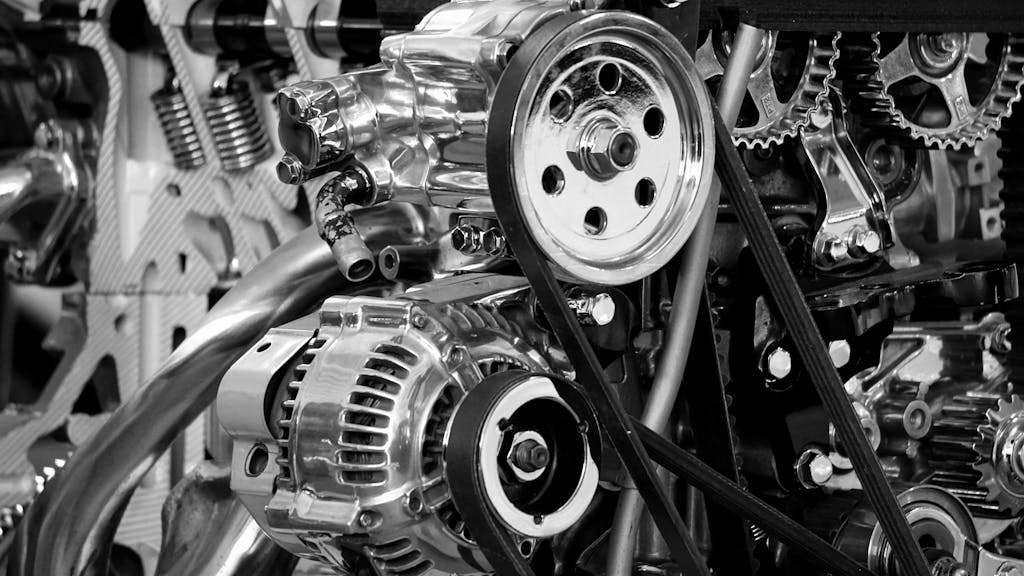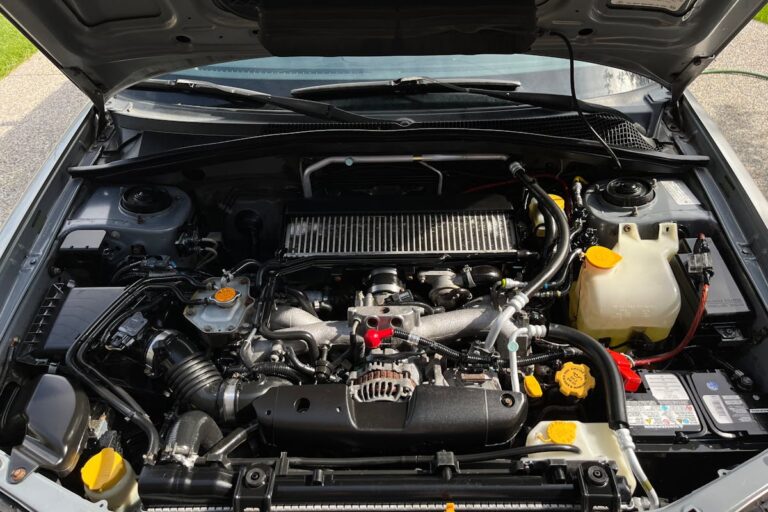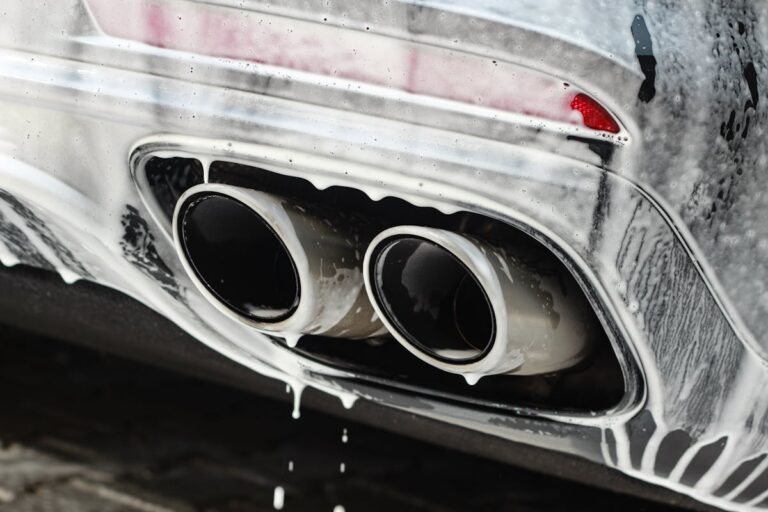Signs Your Alternator Is Failing and Needs Replacement
An alternator failure can manifest through various noticeable symptoms that might initially seem unrelated. Dimming or flickering headlights are often the first indicators, followed by dashboard warning lights that suddenly illuminate. Unusual noises like whining or grinding from under the hood may also occur. Electrical systems may act erratically, and the battery might seem weak or dead. These subtle cues can escalate, leading to engine stalling and a burning smell, suggesting deeper issues.
Dimming or Flickering Headlights
When headlights begin to dim or flicker, it may indicate a malfunctioning alternator, which is responsible for maintaining adequate electrical power in a vehicle’s system. A weak alternator output can cause insufficient electrical flow to the headlights, leading to reduced illumination or intermittent lighting. This condition occurs when the alternator fails to generate enough voltage to meet the vehicle’s electrical demands, particularly under load. Conversely, an alternator overcharging battery might result in excessive voltage, potentially causing bulbs to flicker or burn out prematurely. Both scenarios suggest an imbalance in the alternator’s ability to regulate electrical output efficiently. Monitoring headlight behavior can provide early indicators of alternator issues, prompting timely diagnostics and potential alternator replacement to maintain ideal vehicle performance.
Dashboard Warning Lights
Dashboard warning lights serve as vital indicators of alternator performance issues. The Battery Warning Light may illuminate when the alternator fails to deliver adequate power, potentially leading to a drained battery. Additionally, the Dim Headlight Indicator and Check Engine Signal can also activate, signaling potential alternator malfunction that requires prompt attention.
Battery Warning Light
One key indicator of a failing alternator is the illumination of the battery warning light on the vehicle’s dashboard. This light signifies a potential issue with the alternator charge level, which can result in insufficient power generation to meet the vehicle’s electrical demands. When the alternator is unable to maintain the requisite charge, the battery becomes the primary power source, leading to an increased battery discharge rate. This can hasten battery depletion, ultimately resulting in vehicle inoperability. The battery warning light acts as an early alert, prompting the driver to investigate possible alternator malfunctions. Ignoring this indicator may lead to further electrical system failures, necessitating timely diagnostics and potential alternator replacement to guarantee continued vehicle functionality and reliability.
Dim Headlight Indicator
A dim headlight indicator on the dashboard often signals reduced electrical output from the alternator, which can compromise vehicle safety. This warning light may illuminate when the alternator fails to maintain consistent electrical supply, causing voltage fluctuations. Such inconsistencies can result in headlights that oscillate between dim and increased brightness. These fluctuations indicate the alternator’s inability to regulate power effectively, impacting the vehicle’s electrical system. As the alternator deteriorates, insufficient power is delivered, leading to diminished performance of other electrical components. The dim headlight indicator serves as an early alert for potential alternator failure. It is essential to address this issue promptly to avoid further electrical malfunctions and preserve the vehicle’s operational integrity. Timely replacement of the alternator is recommended to prevent ongoing complications.
Check Engine Signal
While the dim headlight indicator alerts drivers to potential alternator issues, the check engine signal on the dashboard provides a broader diagnostic scope. This warning light can indicate several underlying problems, including power surges and charging system fluctuations, both of which may be symptomatic of an alternator nearing failure. When the vehicle’s onboard diagnostics system detects irregularities, it triggers this alert to prompt further investigation.
Consider the following reasons for the check engine signal related to alternator failure:
- Power Surges: Voltage spikes can cause erratic behavior in electrical components, often linked to alternator malfunction.
- Charging System Fluctuations: Inconsistent power supply can lead to battery drainage, affecting vehicle performance.
- Integrated Diagnostic Feedback: The signal may indicate specific error codes that require professional assessment to pinpoint alternator issues.
Strange Noises Under the Hood
Several distinct sounds originating from beneath the hood can indicate a failing alternator. Whining noises often suggest that the alternator bearings or pulleys are wearing down. This high-pitched sound is typically due to friction as the alternator’s rotating components experience increased resistance. Additionally, grinding sounds may emerge when the internal components, such as the rotor or stator, suffer from excessive wear. Such noises result from metal parts interacting improperly, potentially leading to further mechanical damage if left unaddressed. It is essential to differentiate these sounds from other engine noises to guarantee accurate diagnosis. Regular inspections and timely maintenance can mitigate the risk of alternator failure by identifying these auditory warning signs early, consequently preventing further, more costly vehicle issues.
Electrical System Malfunctions
In addition to unusual noises, electrical system malfunctions frequently serve as indicators of a failing alternator. A malfunctioning alternator can lead to significant issues, including electrical system overheating and voltage regulator malfunctions. These problems can manifest in several ways, potentially compromising vehicle performance and safety.
- Dim or Flickering Lights: A failing alternator might not provide consistent power, causing headlights or dashboard lights to dim or flicker.
- Erratic Electrical Components: Electrical components such as power windows, seats, or radio may operate unpredictably due to voltage regulator malfunctions.
- Burning Smell: Overheating of the electrical system can produce a burning odor, often resulting from damaged wires or insulation, signaling an urgent need for alternator assessment.
Addressing these issues promptly guarantees reliable vehicle operation and safety.
Weak or Dead Battery
A weak or dead battery is often an immediate consequence of a failing alternator, as it fails to adequately charge the battery during vehicle operation. The alternator’s primary function is to convert mechanical energy into electrical energy, ensuring the battery is consistently charged. When an alternator starts to fail, the battery experiences slow charging, which can substantially reduce battery life. Without sufficient electrical input, the battery cannot maintain its necessary charge levels, leading to depletion over time. This degradation is often misattributed solely to the battery itself, when, in fact, the alternator’s inefficiency is the root cause. Regular maintenance checks of the alternator can prevent such issues, ensuring that the vehicle’s battery remains robust and functional throughout its intended lifespan.
Difficulty Starting the Engine
Why does an engine struggle to start when an alternator is failing? A malfunctioning alternator directly impacts the vehicle’s charging system, leading to insufficient power delivery. This deficiency often results in slow engine cranking, as the starter motor lacks adequate electricity. Charging system problems are a primary cause of an engine’s difficulty starting. Here are three critical symptoms to watch for:
- Diminished Electrical Output: An underperforming alternator fails to replenish the battery, causing voltage drops.
- Intermittent Operation: Sporadic alternator performance leads to inconsistent electrical supply, complicating engine startup.
- Dashboard Warning Light: An illuminated battery warning light indicates potential charging system issues, necessitating further inspection.
These factors highlight the importance of addressing alternator issues promptly to prevent engine starting difficulties.
Burning Smell From the Engine Bay
While difficulty starting the engine is a noticeable symptom of alternator failure, another concerning sign is a burning smell emanating from the engine bay. This odor often indicates overheating components within the alternator itself. The alternator’s role is to convert mechanical energy into electrical energy, charging the battery and powering various vehicle electrical systems. When it malfunctions, it can cause excessive friction or electrical resistance, leading to overheating. The resulting heat may damage wiring insulation or other nearby components, producing the distinct burning smell. Additionally, an inefficient alternator may cause an unexpected battery drain, as it fails to maintain ideal battery charge levels. This combination of symptoms should prompt immediate inspection and potential replacement of the faulty alternator to prevent further vehicle issues.
Frequent Engine Stalling
Frequent engine stalling can be a clear indicator of a failing alternator, as the alternator is essential for maintaining electrical power to the engine’s ignition system and electronic components. When the alternator fails, the battery cannot recharge effectively, leading to insufficient power supply. This affects pivotal operations and can result in frequent engine misfiring and frequent engine overheating.
- Voltage Drop: Insufficient voltage can lead to stalling, as it disrupts the ignition system’s performance.
- Diminished Battery Life: A failing alternator can cause the battery to deplete faster, leading to power loss.
- Erratic Electrical Behavior: Unstable electrical supply may cause components to malfunction, contributing to frequent engine stalling.
Proper diagnosis and timely replacement are indispensable.
Unusual Belt Wear
Unusual belt wear can indicate underlying issues with the alternator’s functioning, primarily due to belt tension problems or misalignment. When the belt is either too tight or too loose, it can result in accelerated wear and potential slippage, affecting the alternator’s ability to charge effectively. Misalignment of the alternator pulley can also lead to uneven wear patterns, signaling the need for inspection and potential replacement.
Belt Tension Issues
A common indicator of belt tension issues in a vehicle’s alternator system is unusual belt wear. This wear may result from improper tension, leading to pulley misalignment and alternator belt slippage. When the belt is not at suitable tension, it can either slip or become overly strained, causing uneven wear patterns and diminishing the belt’s lifespan.
To diagnose belt tension issues, consider the following indicators:
- Squealing Noises: A high-pitched squeal often results from belt slippage, suggesting the belt is too loose.
- Cracks or Fraying: Visible damage such as cracks or fraying indicates excessive stress or improper tension.
- Glazing: A shiny, smooth surface on the belt suggests slippage and overheating, pointing to inadequate tension.
Proper tension guarantees efficient alternator function and prolongs belt life.
Misalignment Concerns
When examining the causes of unusual belt wear, misalignment of the alternator pulley system emerges as a critical factor. Pulley alignment is essential for ensuring the proper functioning of the drive belt system. Misalignment often results from improper installation or wear and tear in the alternator’s mounting brackets. This can lead to increased friction and uneven tension distribution across the belt, causing premature wear. Additionally, alternator shaft movement can exacerbate misalignment issues. The alternator shaft should remain steady; excessive lateral or axial movement indicates a potential bearing or mounting problem that can disrupt pulley alignment. Regular inspections and adjustments are necessary to maintain alignment, ensuring ideal performance and longevity of both the alternator and the belt system. Proper alignment drastically reduces the risk of unexpected breakdowns.
Frequently Asked Questions
How Long Does an Alternator Typically Last Before Needing Replacement?
A typical alternator lifespan ranges from 80,000 to 150,000 miles. Factors affecting alternator longevity include driving conditions, electrical accessory usage, and maintenance practices. Regular monitoring and timely checks can help guarantee satisfactory performance and prevent premature failures.
Can a Failing Alternator Affect Fuel Efficiency?
Yes, a failing alternator can affect fuel efficiency. It impacts engine performance by causing the battery charge level to drop, forcing the engine to work harder, thereby increasing fuel consumption and reducing overall efficiency.
What Tools Are Needed to Test an Alternator at Home?
To test an alternator at home, one would need a multimeter for battery testing and voltage meter readings. This process involves measuring voltage output to verify the alternator maintains proper charge levels for vehicle operation.
Is It Safe to Drive With a Failing Alternator Temporarily?
Driving with a failing alternator is not advisable due to limited battery charge duration and increased electrical system strain. This scenario can lead to unexpected vehicle shutdowns, compromising safety and potentially causing further mechanical issues.
How Much Does It Cost to Replace an Alternator?
The alternator repair cost typically ranges from $300 to $500, depending on the vehicle model and labor rates. Alternator replacement quotes can vary, with parts costs alone averaging between $100 and $350 for new or remanufactured units.



